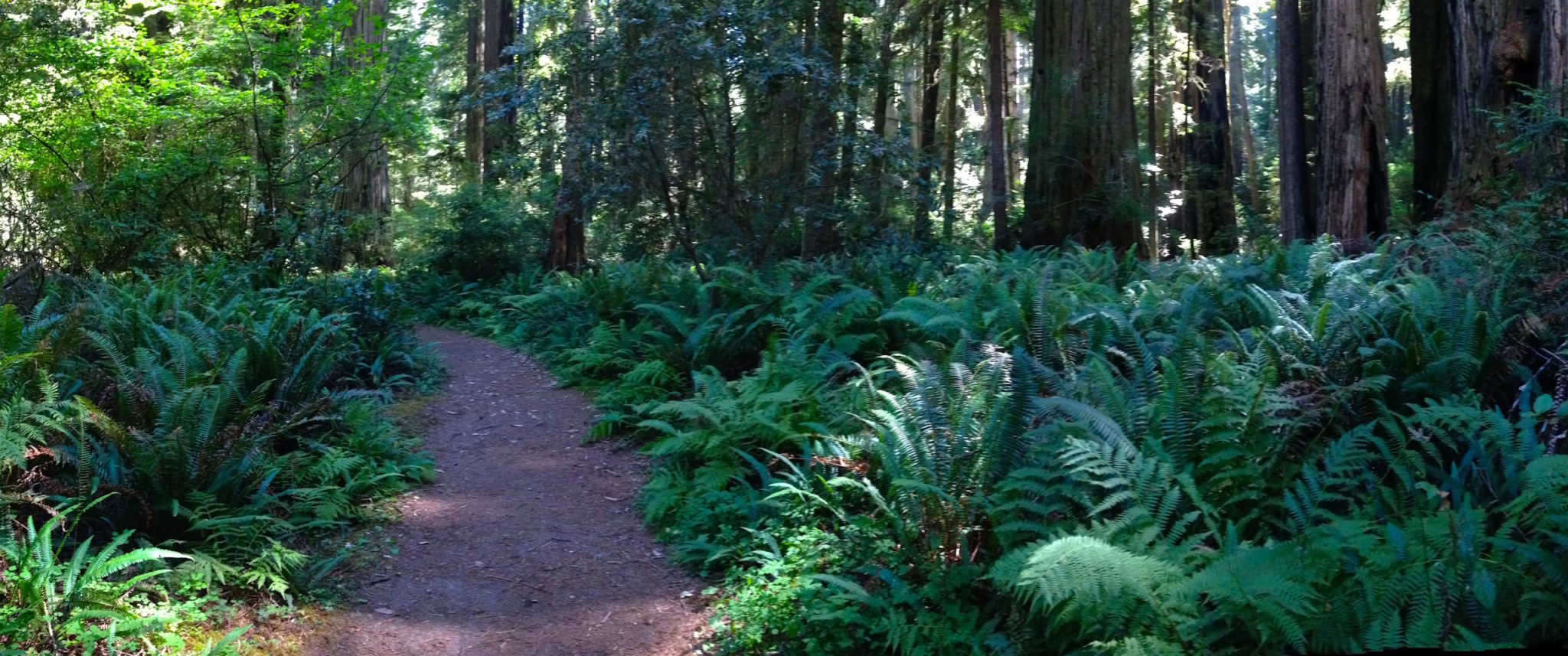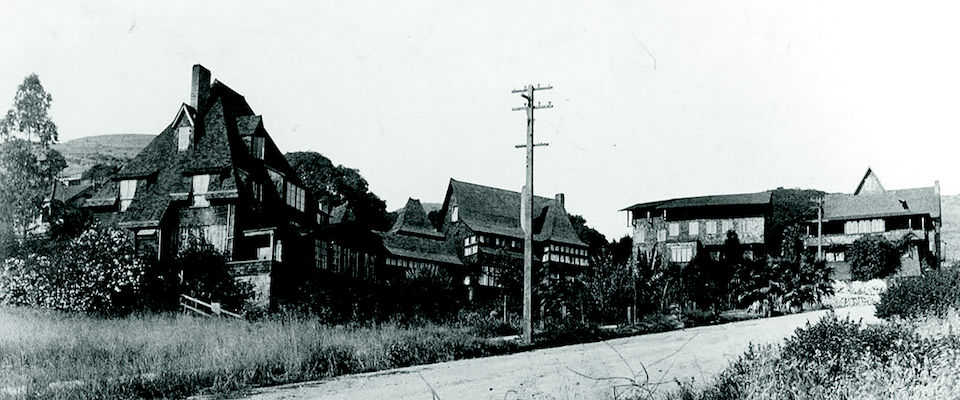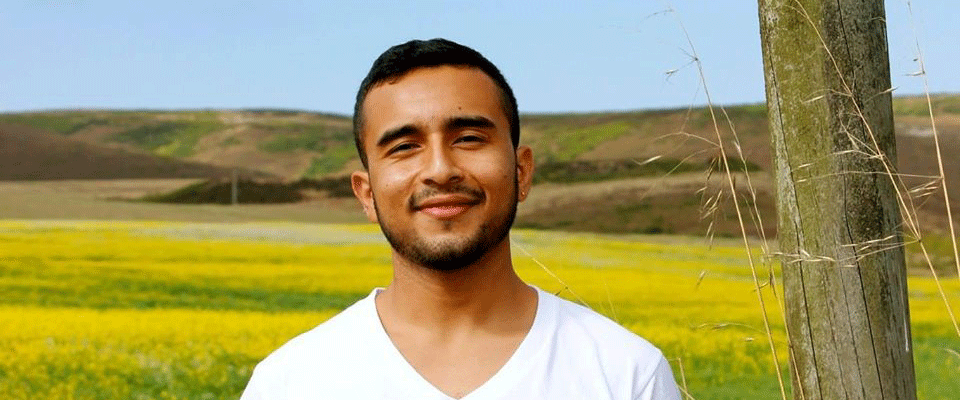Emily Burns was driving north from the Bay Area one day, idly woolgathering, when it hit her.
“Western sword ferns,” she recalls thinking. “They’re twice as big in the northern end of their range as in the southern end. And it struck me that it had to be due to water availability. The fact that it’s wetter in Redwood National Park in Humboldt County than, say, Lime Kiln Creek on the Big Sur coast translates as larger ferns in the north. It all seems obvious now, but there was nothing in the literature on it.”
The significance of the epiphany may elude most people, but Burns is paid to note such things. She took her PhD from Berkeley in integrative biology 2009, and is the science director of Save the Redwoods League, the venerable San Francisco-based conservation group that has protected more than 200,000 acres of redwood forest.

A mature redwood forest is more than just gargantuan trees. It encompasses a vast and knotted web of interdependent life: Fascinating animals like the marbled murrelet, a diminutive seabird that loves to nest in the canopies of ancient conifers, and fishers and Humboldt martens, weasel-like predators that require large tracts of big timber to thrive.
Old-growth redwoods also exist with a wide suite of associated plants. During the last 10 years, it was discovered that the canopies of the great trees support a distinct ecosystem, with a veritable jungle of ferns, trees and shrubs living an “epiphytic” existence hundreds of feet in the air, sinking roots into the redwoods’ shaggy bark, seeking the light and heat of the higher elevations, and sustained by the moisture of coastal fog.
More familiar to the casual hiker, of course, are the plants of the understory, such as trillium and redwood sorrel, and perhaps most notably, western sword ferns. Anyone who has strolled through a redwood grove would recognize them instantly: They’re the big ferns that send out distinctive large fronds from a circular base. In the redwood forest, they’re pretty much ubiquitous.
Prior to her road trip insight, Burns had been researching how different plant species take in water from fog. Of the 10 under investigation, she determined that western sword ferns were the most efficient at utilizing marine moisture.
Then came her ah-ha moment, and she intensified her study, trying to determine if the sword-fern-and-water-connection pointed to a bigger story. And after tracking sword ferns at 120 sites over the past four years, she found that water is indeed the critical determinant in size. But despite her original epiphany, that’s not due strictly to “latitudinal factors,” she says. Other elements come into play, such as elevation or the exposure of the slope that a fern calls home. Still, while many things ultimately can affect water availability, the bottom line remains clear: More water, more and bigger fronds. Less water, smaller and fewer fronds. More than virtually any other redwood-associated plant, it seems, western sword ferns are exquisitely attuned to water.
It is somewhat serendipitous that Burns’ research coincided with the recent drought. As precipitation slackened over the past few years, sword ferns responded dramatically, confirming her hypothesis.
“Over their entire range, we saw that sword ferns were losing 30 percent of their leaf area due to the drought,” Burns said. “The shrinking was proportional – in areas where the ferns were already small, they got even smaller, while the bigger ferns in the north still remained bigger. But the response was uniform — as less water became available, they all converged to smaller sizes.”

And for a fern, that’s absolutely the right response to drought, Burns says. While western sword ferns take in water through their leaves during moist conditions, they also lose water through their leaves in dry spells. So it makes sense for them to have less frond area during drought.
Fern lovers shouldn’t worry, though; the ferns aren’t about to go extinct.
“Sword ferns are tough,” Burns says. “They can handle both wildfires and drought pretty well. Even if the crowns get brown and crunchy, the underground rhizomes are usually fine, and start sending out fronds as soon as there’s water.”
Burns finds sword ferns eminently worthy of research in their own right, but they also have some real utility for redwood forest protection. First, they’re quick to indicate likely drought and climate change impacts in specific portions of the forest. Like sword ferns, redwoods need ample water; and if sword ferns are struggling today, it could indicate problems for redwoods down the road.
“It’s really hard getting climate change and drought data from redwoods,” explains Burns. “You have to do laborious things like extracting and analyzing tree cores. You’re going to get a quicker sense of general ecosystem response if you can track specific understory plants that provide reliable data.”
Burns notes that some sword ferns were fat, wet and happy throughout the entire research period, indicating that some parts of the redwood forest are well-watered even during drought. That could help scientists prioritize certain areas for conservation as climate change looms.
“Ferns like places that are dank and wet, and so do redwoods,” Burns says. “As we plan for climate change, it’s essential to know not just where redwoods are thriving, but where they’re likely to thrive in the future. Sword ferns can help us determine that. It’s now clear that they’re superb indicators of redwood forest health.”
Burns and her fellow researchers have accumulated a lot of data on sword ferns, but it’s hardly sufficient for their needs. They need more information, and they’re actively enlisting the public for help. Save the Redwoods League has launched the Fern Watch Project, an initiative that allows citizen naturalists to send data on sword fern location and size via a phone app.
“We need to know a lot more about sword fern distribution,” says Burns. “Anyone interested in helping out can download the free iNaturalist app for Android or iPhones and use it to send photos and details on sword fern location and frond size. All information is appreciated, and essential to our work.”





















